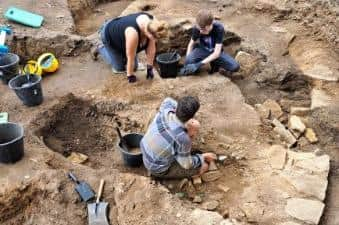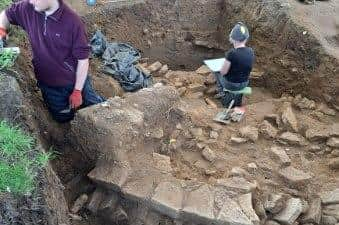Unexpected defensive feature revealed by dig on Roman site under playing fields in Yorkshire
The unexpected find was made during two weeks of excavations at the Burrs playing field in the town.
The fort at Brough – which was known to the Romans as Petuaria - was founded in 70AD close to the banks of the River Humber and abandoned in about 125AD. It may have continued to be maintained as a naval base.
Advertisement
Hide AdAdvertisement
Hide AdArchaeologists found the foundations of a bastion, projecting from the curtain wall at the north-eastern corner of the fort. It was probably added to the defences later, around 270 to 300AD.


Retired senior lecturer in archaeology at Hull University, Dr Peter Halkon, said the D-shaped structure could have been used to control access along the Roman road, giving defenders a useful advantage.
The wall was first discovered by Dr Philip Corder, who identified a Roman town of about five hectares, in a series of digs between 1934 to 1937. Dr Halkon said Corder "missed the bastion by inches": "The fort was a vast area - the Burrs playing field is only a quarter of the size of the area that would have been enclosed by the wall. The towers were added around 270AD to 300AD.
"A bastion, a tower that projects from outside the wall, allows artillery on the top like a ballista (that launched bolts or stones) or archers to fire along the line of the wall.
Advertisement
Hide AdAdvertisement
Hide Ad"The towers Corder excavated were rectangular – this one in the corner is curved and matches the ones that were on the north gate that was excavated under Brough House, a large demolished Georgian house.”


Neighbours allowed the volunteer diggers to excavate two trenches in adjacent gardens which uncovered a Roman road with a “proper stone surface”. Among finds this year was a tiny figurine which may represent a Roman emperor or the god Apollo.
Ninety people took part in the dig, which is supported by East Riding Archaeological Society and Yorkshire Archaeological and Historical Society. It is part of the Petuaria Revisited project and is co-directed with archaeologist James Lyall.
